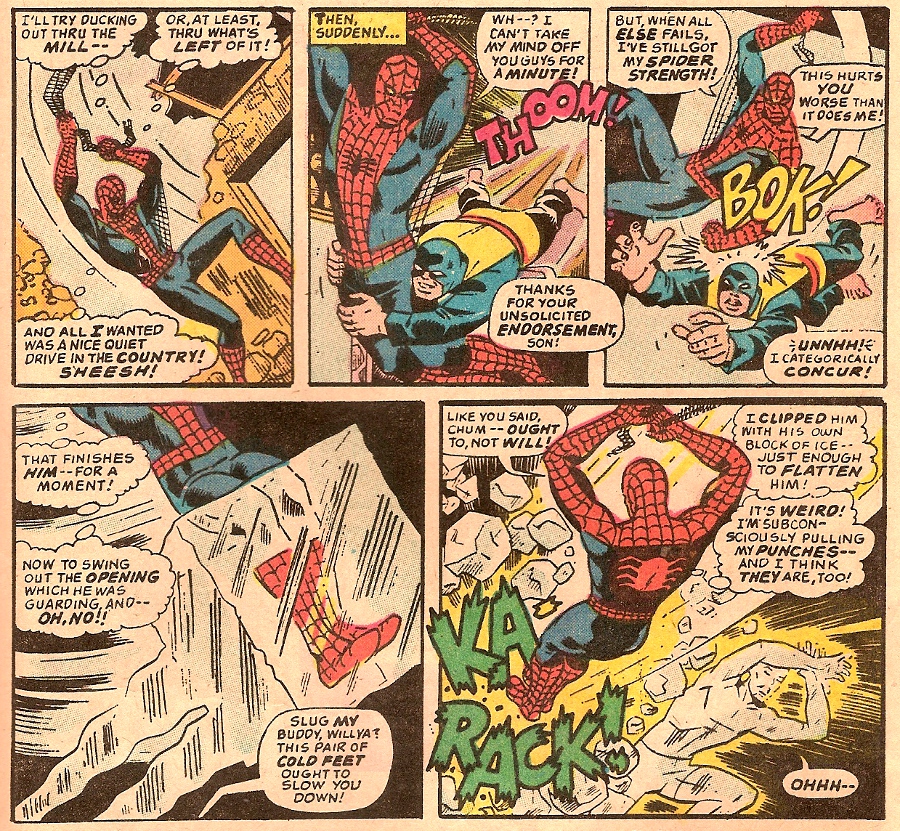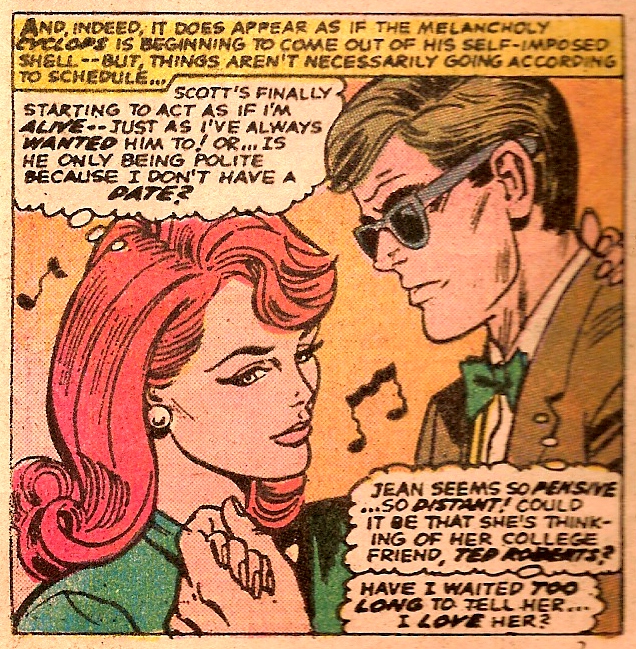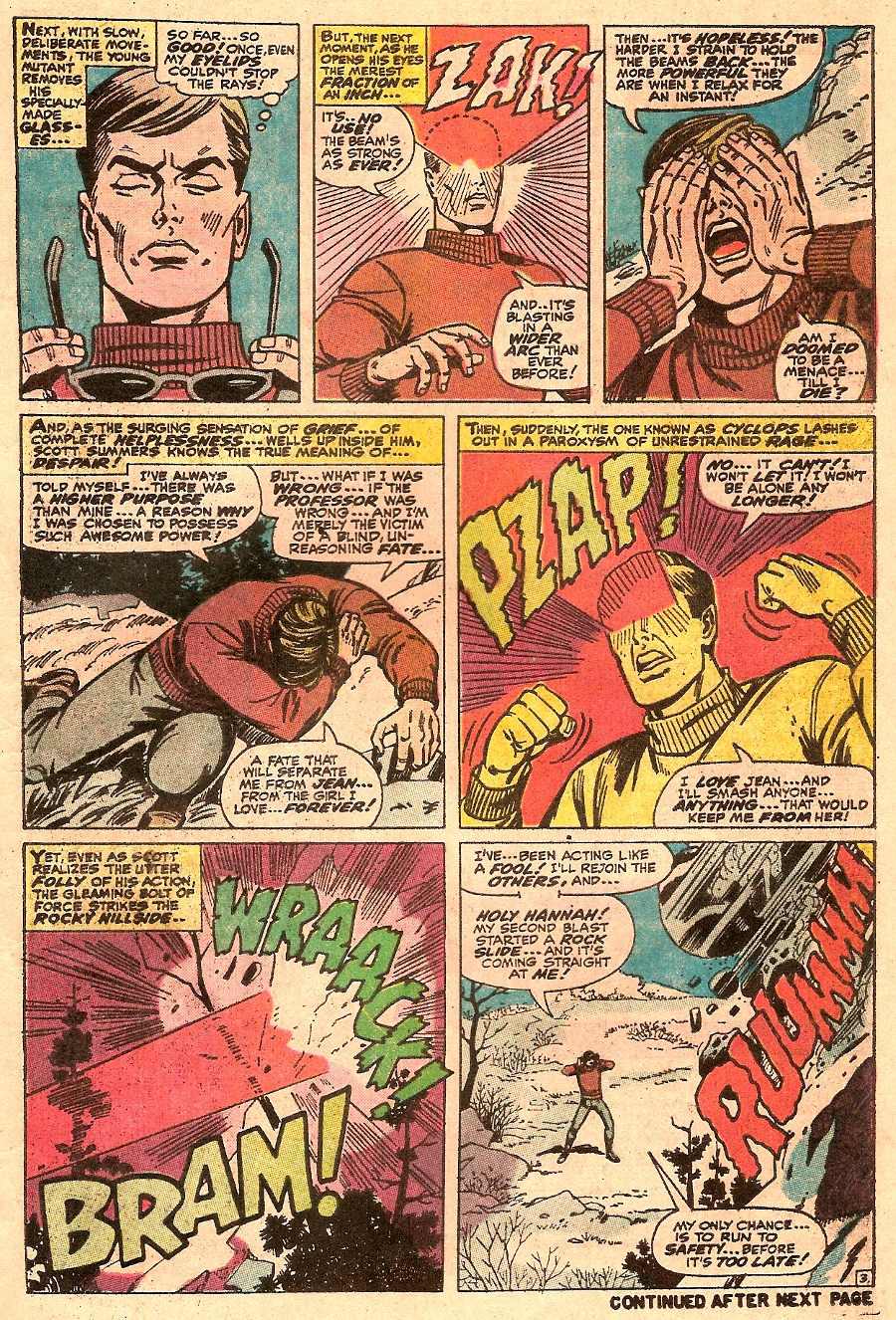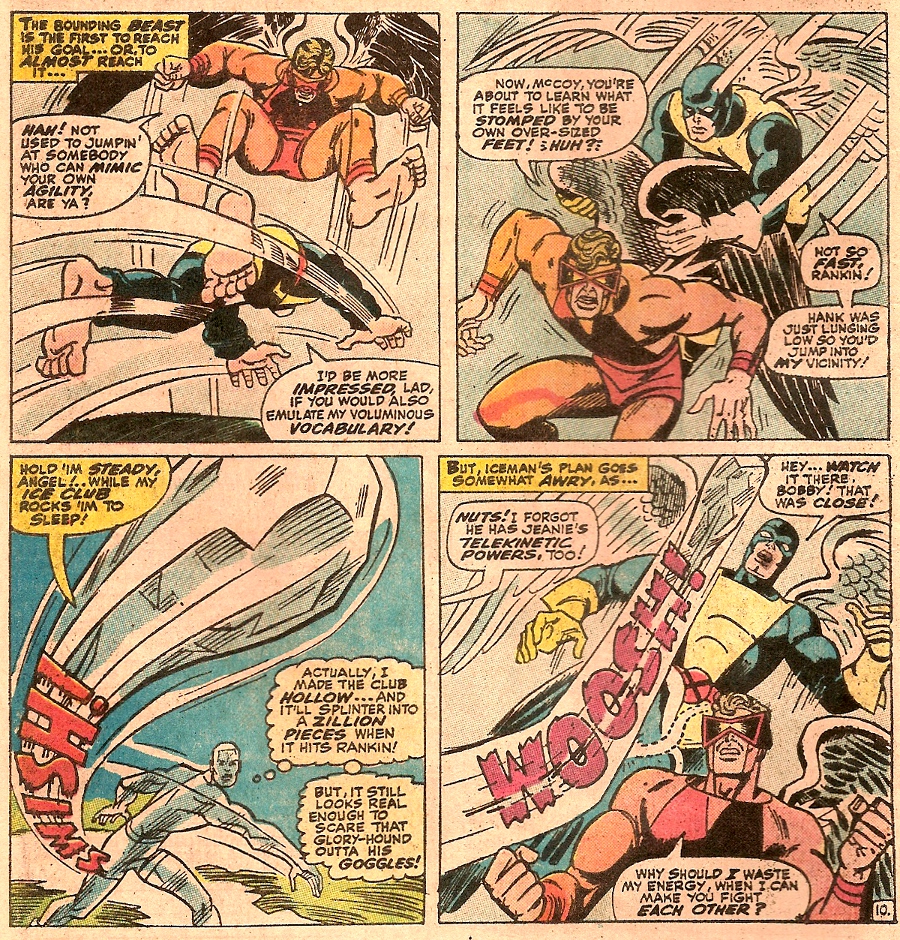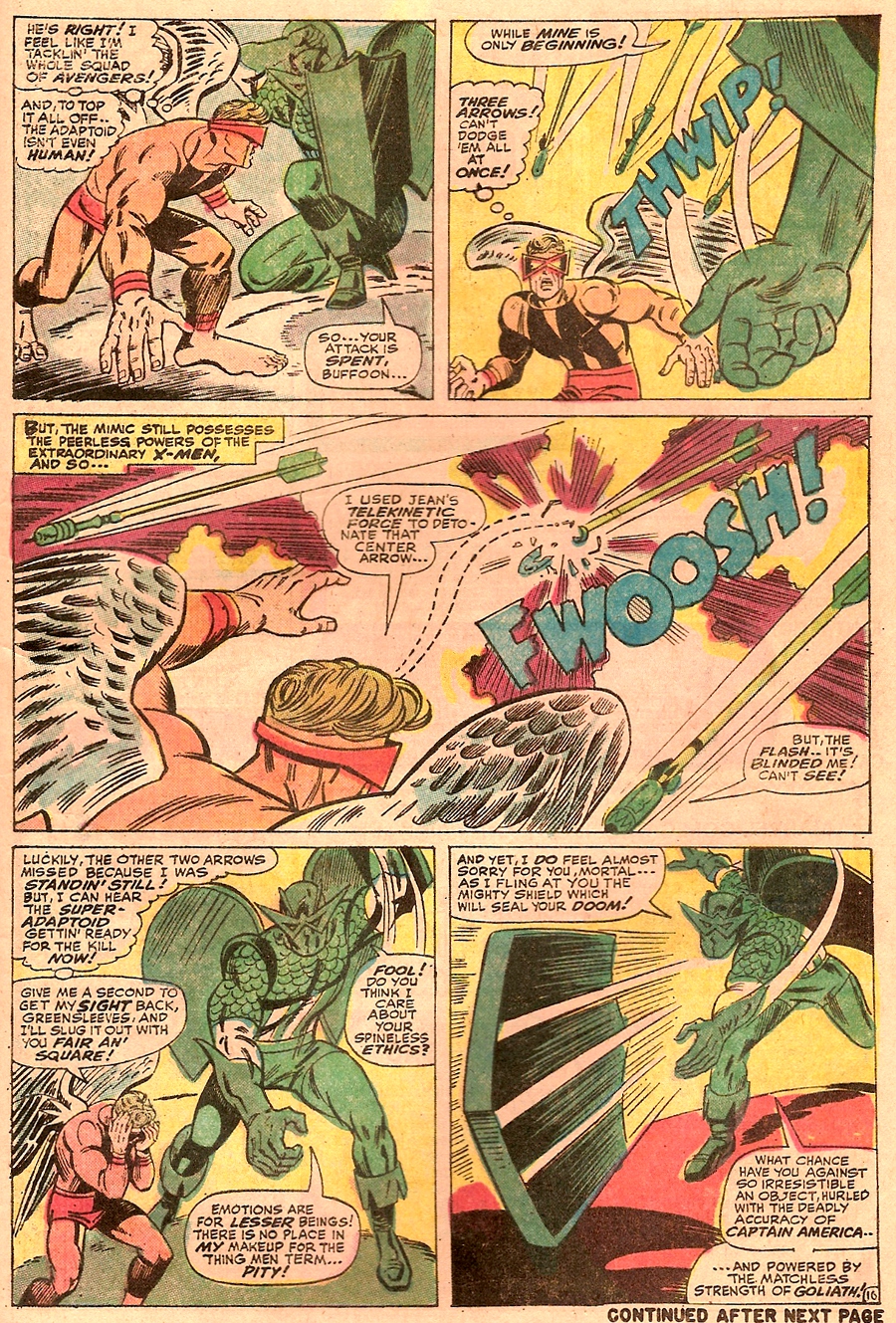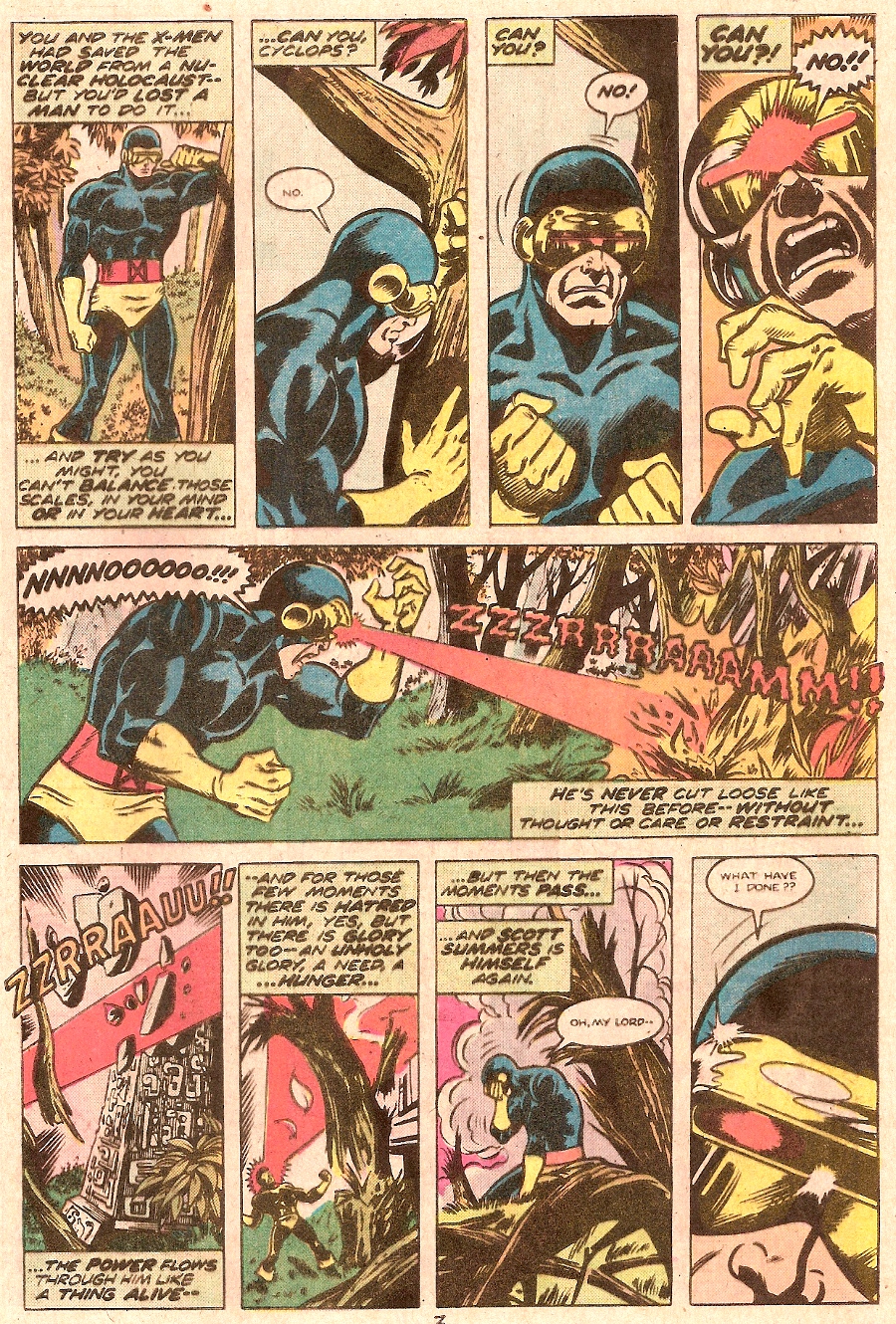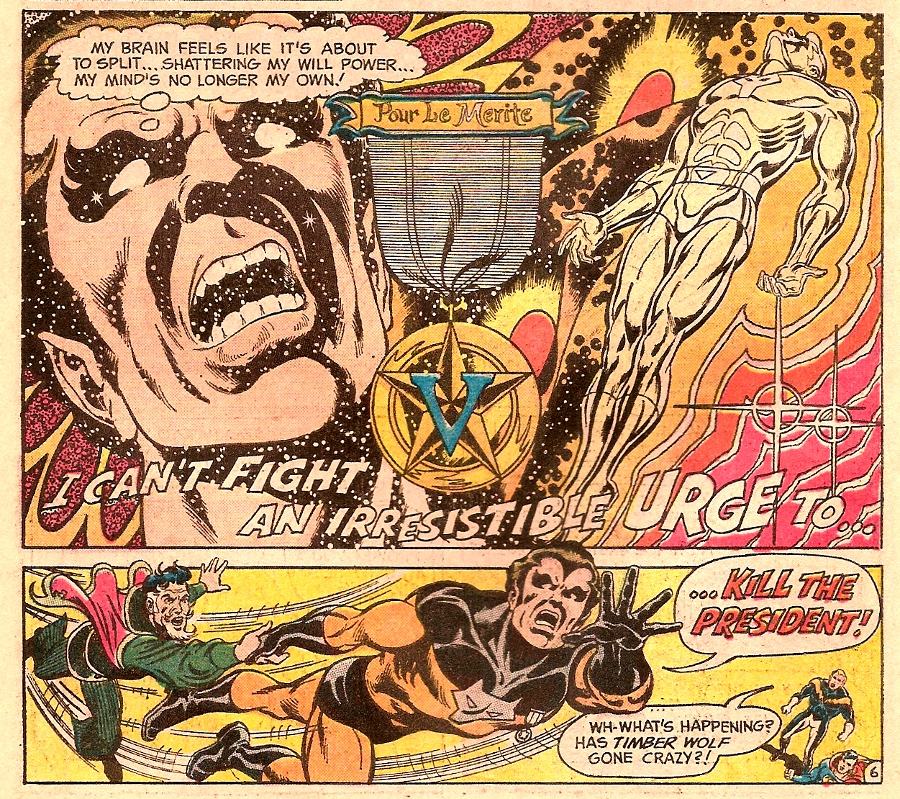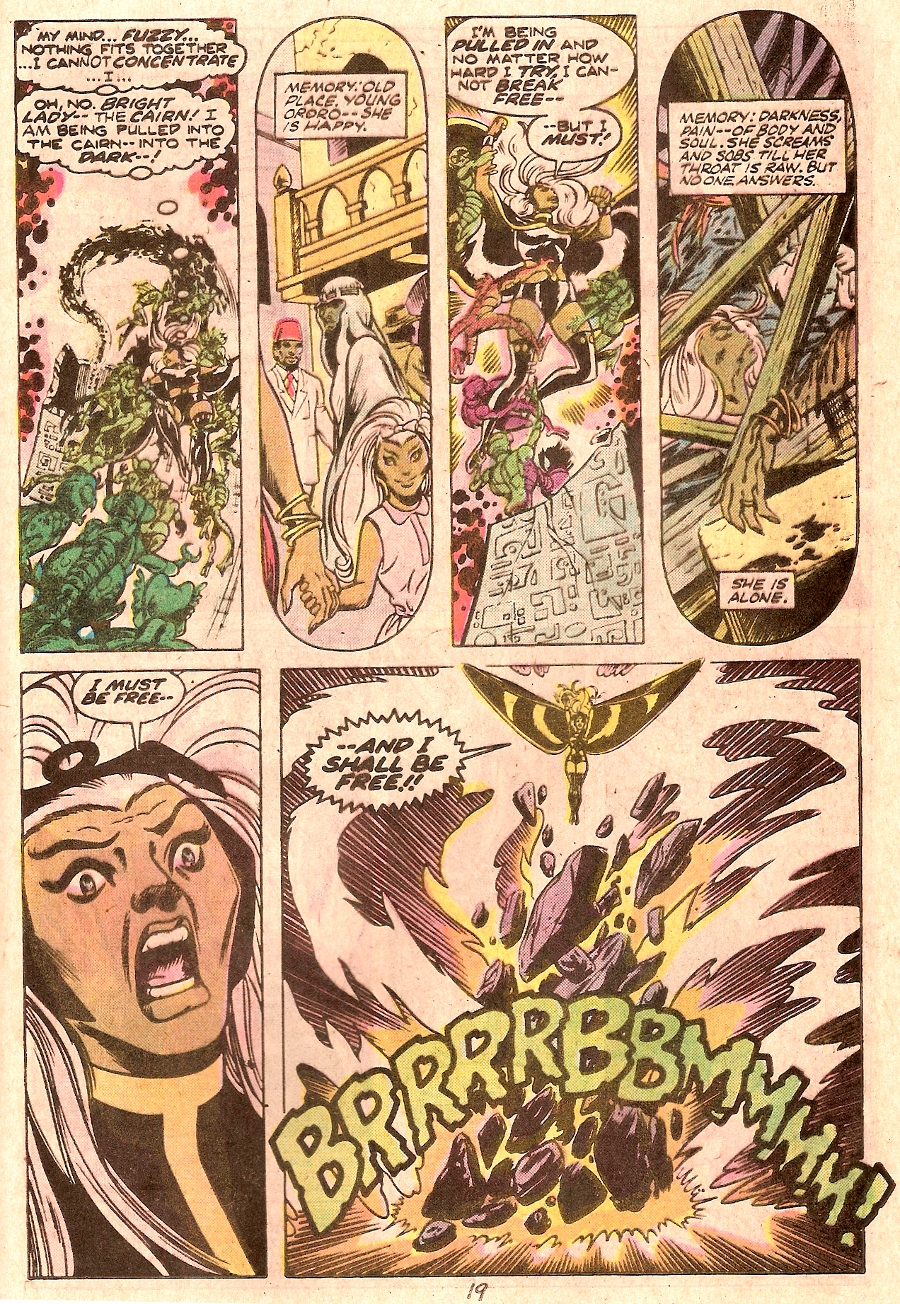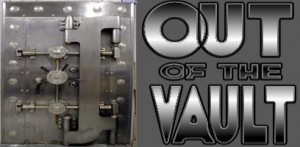
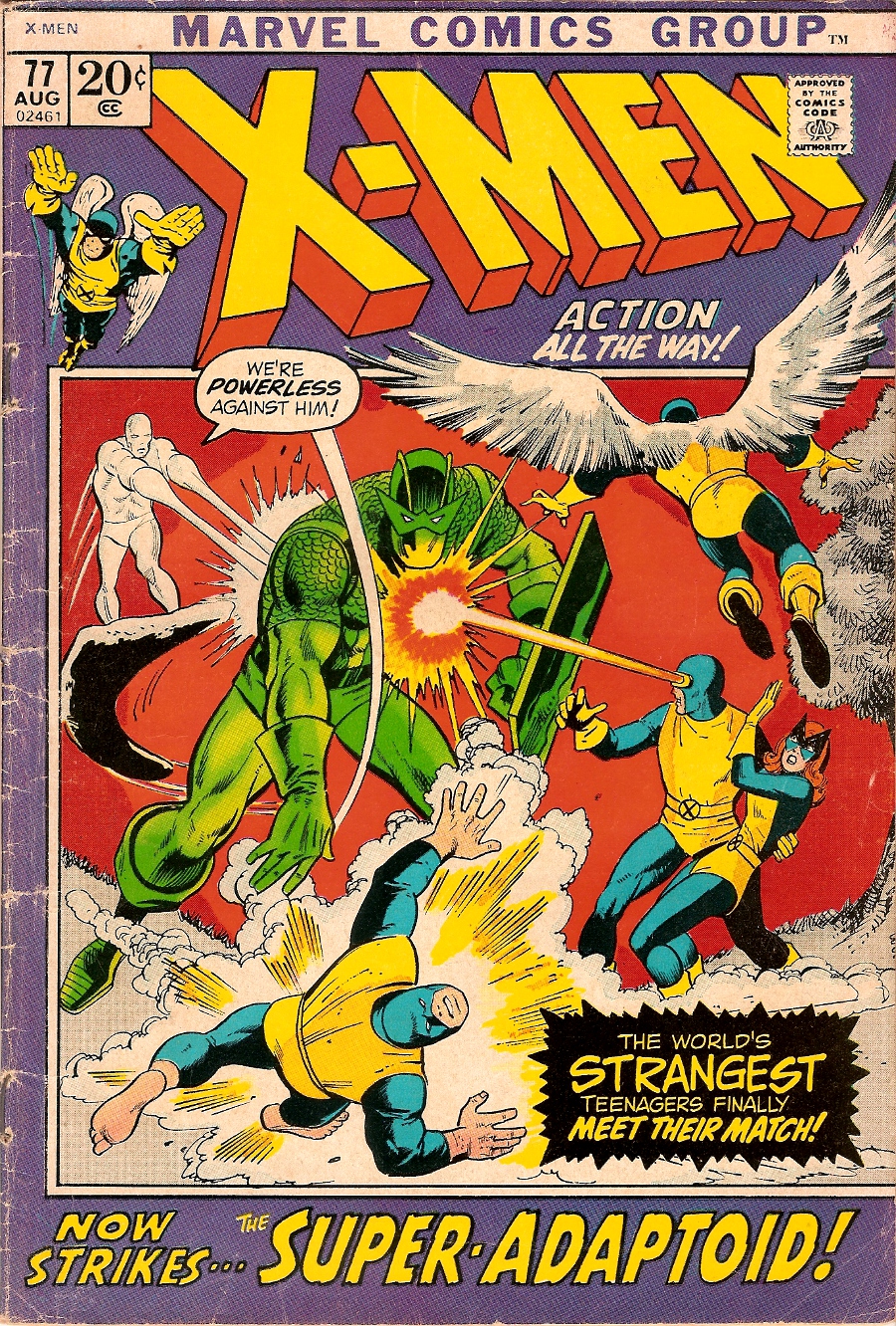 I mentioned in Monday’s recap of the first X-Men movie that the original X-Men had not been a huge hit in the comics. Here’s a look at why.
I mentioned in Monday’s recap of the first X-Men movie that the original X-Men had not been a huge hit in the comics. Here’s a look at why.
The issue in question is issue 77, featuring the story “When Titans Clash,” written by Roy Thomas, pencilled by Werner Roth and inked by John Tartaglione. And one measure of the group’s lack of popularity is that this story is actually a reprint from issue 29; at this point in the early 70’s, Marvel had given up on new X-Men stories and was just republishing their old work to keep the trademark in place.
Let’s take a look at the splash page to get our first hint at why the group was not taking off.
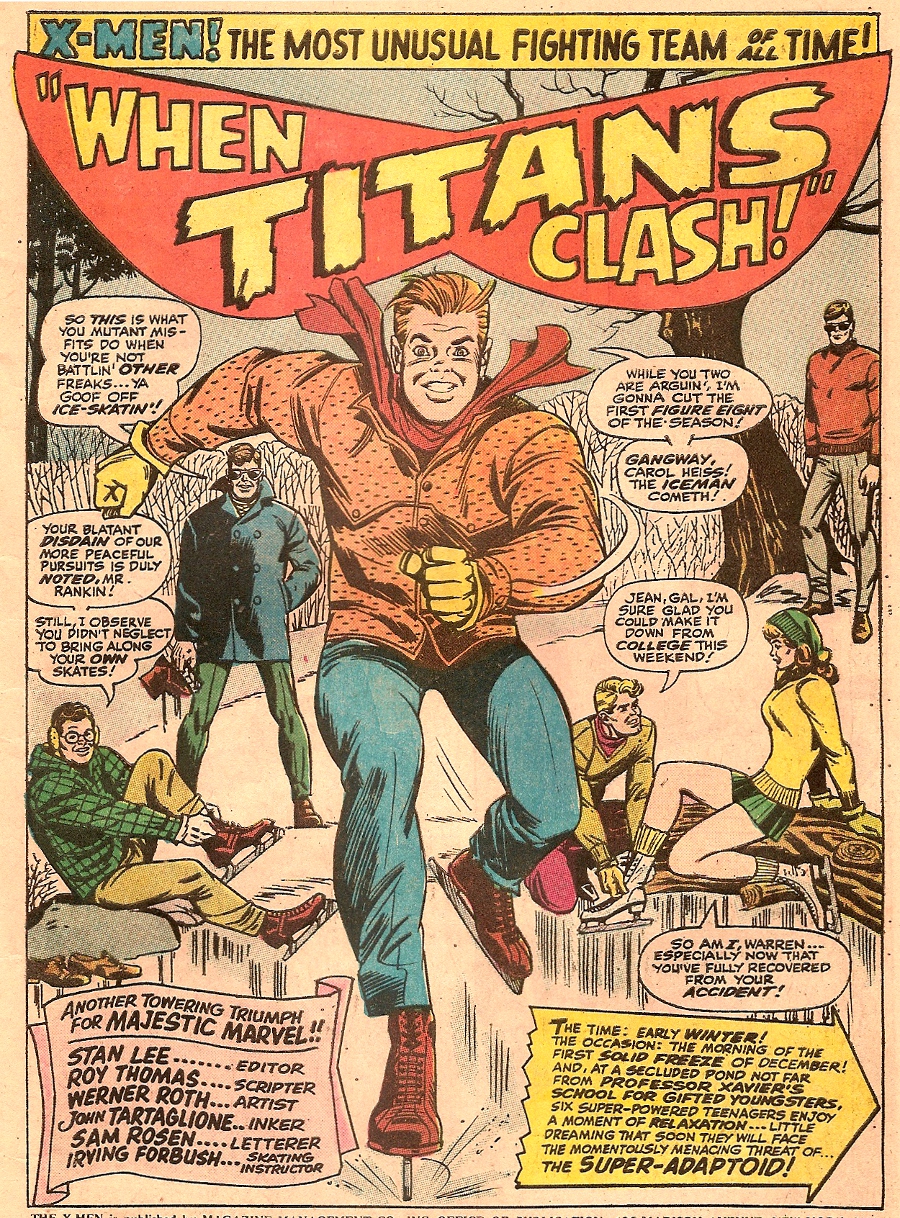
Okay, you say, but there’s nothing really awful about this. In fact, the artwork isn’t half-bad. The anatomy is solid and everything looks pretty polished and professional. What it lacks is excitement. When I was younger I couldn’t put my finger on what it was about Werner Roth’s work; it was just dull. Looking at it now, though…
Look at that trio on the right, Scott Summers hanging back silently watching as Warren Worthington helps a very shapely Jean Grey on with her skates. That is good, solid work… for a romance comic. In fact, just before he got the X-Men gig, Roth had been drawing romance comics for DC.
So although his figures in action could be awkward and clumsy, as in this fight with Spider-Man from “Along Came a Spider” (reprinted in issue 83)…
Ask him to draw a panel of Jean staring pensively into space while she pines over Scott and he tore that shit up (from the reprinted story in issue #80, “Beware the Juggernaut, My Son”)!
But let’s get back to the story. You’ll notice that there are two guys in goofy sunglasses in the splash panel. The silent one is Scott Summers, a.k.a Cyclops. The other is Cal Rankin, who had joined the group a few issues earlier as Mimic. He could copy powers like Peter Petrelli from Heroes. Like the Super Skrull with the Fantastic Four, Mimic had all of the X-Men’s powers at once.
As everyone else is skating, Scott wanders off by himself to try an experiment. He thinks he may be gaining some conscious control over his powers, and so he decides to try taking off the special sunglasses he uses to keep his eyebeams from destroying everything in their path.
The experiment is a failure. Scott lays waste to the woods and vows that he must never let himself cut loose like this again. Unfortunately, Scott’s mishap has awakened a super-android which had been taking refuge under the hill, the Super-Adaptoid. Designed by A.I.M. to kill Captain America, the Super-Adaptoid could copy the powers of the super-heroes it fought. Right now, it possessed the powers of four of the Avengers: Captain America, Hawkeye, Goliath, and the Wasp.
Wandering out into the woods to see what all the commotion is about, the android runs into Bobby Drake, Iceman. He freezes the Super-Adaptoid solid and flees back to the mansion, where nobody believes his story (and within two panels, they have him believing he just imagined it, which, no).
They then get into a fight with Mimic, where he demonstrates he can use their powers as well as they can, even though his costume is both boring and ugly.
Mimic leaves in a huff, which is when the Super-Adaptoid (who pretended to be frozen so he could follow Bobby back to the others) decides to attack. He defeats the X-Men easily, which is another reason the book probably wasn’t doing so well. I have three reprinted issues from about this time (after Kirby left and before their first big costume change leading into Neal Adams’s brief run), and the X-Men lose fights in all three.
Let’s face it, the team just didn’t have any firepower. Beast was agile, but not especially strong. Angel was just a normal guy with wings. Not only was Jean Grey’s telekinesis relatively weak, but being a girl (written by a man in the late 60’s), she startled easily; you could derail her powers with a loud shout. Iceman seemed to have potential, but his ice was easily shattered and he was susceptible to heat.
And Cyclops… I mean, we were always being told how unimaginably destructive his eyebeams were, but they never actually did anything useful. Spider-Man dodged ’em, Mimic blocked them with his own eyebeams, Super-Adaptoid deflected them with his shield, Magneto blocked them with his force field, Blob and Juggernaut just shrugged them off. For all his supposed power, Cyclops was about as useful as Mr. Furious in a fight.
Luckily for the X-Men, Mimic forgets his keys or something and comes back in time to save them from being destroyed. And now, in what is otherwise a pretty silly throwaway story, we get the neat conceptual twist: X-Men vs. Avengers, as performed by mimics.
Mimic manages to win by using Professor X’s telepathy to convince the Super-Adaptoid to copy his powers. Since he couldn’t mimic the Avengers’s powers from the Super-Adaptoid, he figures it would be bad if the transfer is attempted the other way around. And he’s right; they both end up losing the powers they’ve copied.
So between the boring art (good for romance, not so good for super-heroics), the silly scripting and the fact that the X-Men couldn’t fight their way out of a paper bag, the book never got very popular.
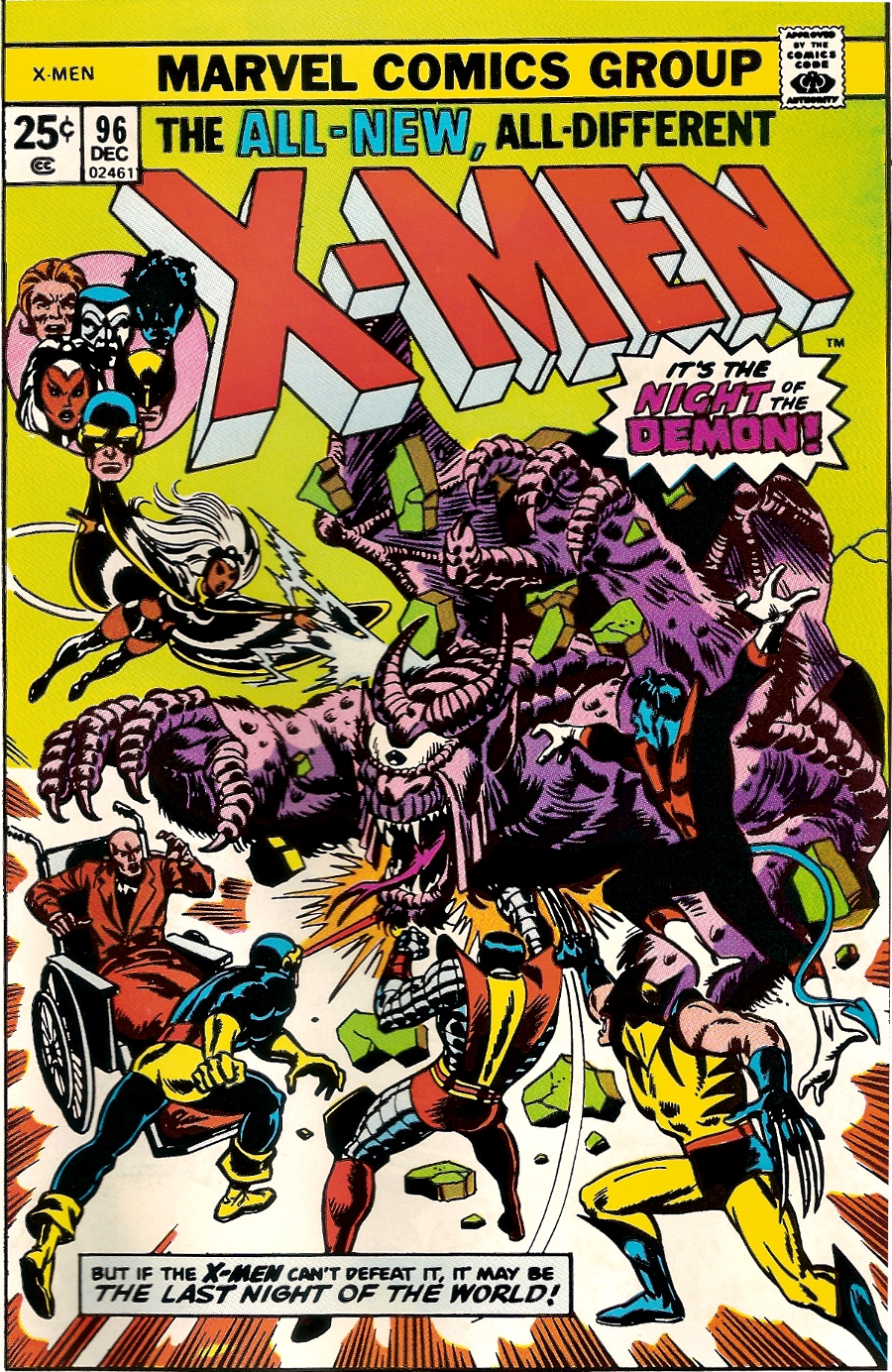 For contrast now, let’s look at one of the early books in the run of the new X-Men, which began the group’s rise to popularity. “Night of the Demon”–written by Chris Claremont, pencilled by Dave Cockrum and inked by Sam Grainger–was first published in X-Men #96 (though appropriately, the scans in this post were taken from a reprint titled Classic X-Men #4; I sold my run of X-Men when I was desperate for money in the late 80’s).
For contrast now, let’s look at one of the early books in the run of the new X-Men, which began the group’s rise to popularity. “Night of the Demon”–written by Chris Claremont, pencilled by Dave Cockrum and inked by Sam Grainger–was first published in X-Men #96 (though appropriately, the scans in this post were taken from a reprint titled Classic X-Men #4; I sold my run of X-Men when I was desperate for money in the late 80’s).
The X-Men have just returned from their first adventure as a new team (not counting the giant-size special that introduced them). While the rest of the team trains in the Danger Room, Cyclops wanders off into the woods alone to angst over the death of a new member: Thunderbird, who was killed while trying to keep Count Nefaria from escaping his secret mountain headquarters in a fighter jet (actually, Claremont killed him off because he didn’t fill any role in the group that someone else didn’t already fill better–Colossus was just as strong but cooler-looking, Wolverine had an even worse attitude, and Storm, as a black woman, had the minority angle covered).
Scott lays waste to the woods and vows that he must never let himself cut loose like this again (again). Unfortunately, Scott’s mishap has broken open a strange stone cairn covered with mystic symbols that no one from the school has ever noticed before.
So while the other X-Men are all arguing with Wolverine over the fact that he’s a loose cannon, Scott comes crashing through the wall and warns them that bad mojo is coming in the form of a demon named Kierrok. Storm, Colossus and Nightcrawler all pound on it, but he shrugs them off.
And then…
I love how taken aback Scott is there. This was an incredibly significant moment, because before this, Wolverine had just been that dude in the silly yellow costume flailing his claws around ineffectually. Colossus, Storm and Nightcrawler, having all been created especially for the team, had been getting the spotlight for the previous couple of issues. This was the first time that we were seeing that there was more to Wolverine than a silly costume and a chip on his shoulder. It would take John Byrne’s run to really turn Wolverine into a star, but this was the moment that started it all.
Unfortunately, Kierrok can regenerate (and given how much regeneration has turned into a central facet of Wolverine’s character, it’s funny just how surprised he is when someone else can do it, too). So Professor X decides to read his mind to find a weakness, and we get one of Dave Cockrum’s patented psychedelic panels…
That reminds me of this one from Superboy Starring the Legion of Super-Heroes.
Professor X realizes the only way to beat Kierrok is to close the broken cairn, so he sends Storm out to do the job, which is how we learn that Storm is claustrophobic.
Luckily, it’s the awesome kind of claustrophobia that lets you save the world by blasting the cairn with lightning to seal it, and not the sucky kind that makes you freeze up and be dragged down to eternal torment in hell, so there is that. Kierrok disappears and the world is safe, for now (actually forever AFAIK, because Kierrok was kind of a misfire that Claremont decided not to revisit).
So from suspiciously similar beginnings, we have completely different stories. The newer story doesn’t have the neat conceptual twist that the older story does, but instead of romance-comic soap-operatic pining, it reveals two of our characters’ troubled pasts and hints at the greater awesomeness to come. And the art is much more dynamic and exciting.
Hope you enjoyed. Join us Monday for more of Brian Singer’s cinematic take on the X-Men.

